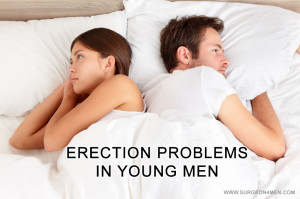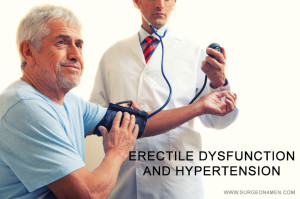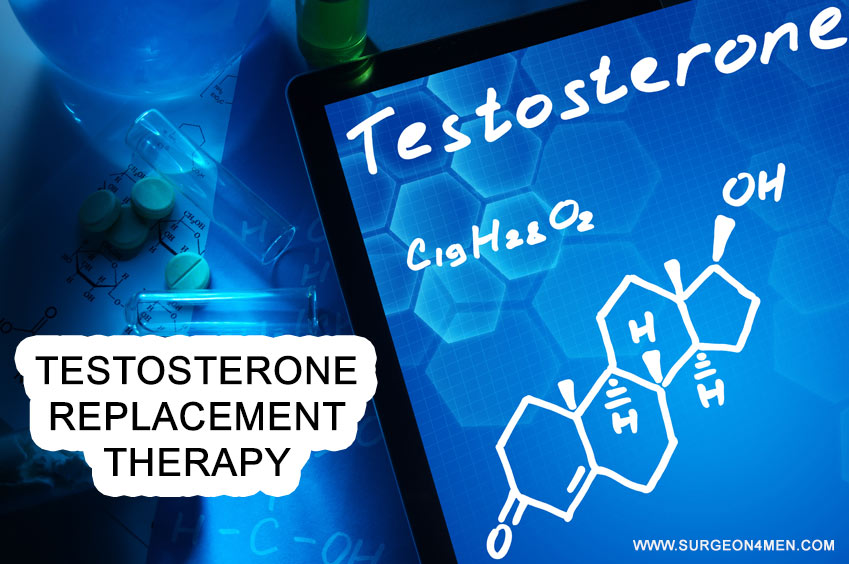Testosterone Replacement Therapy
Testosterone in a natural hormone that is secreted and released in adequate doses by the male gonads (even before birth). The primary functions of testosterone includes; distribution of body fat, maintenance of bone density and lean muscle mass, production of sperms and maintenance of libido (sex drive). The clinical diagnosis of hypogonadism is made if free testosterone concentration is under 250 pmol/L or if total serum testosterone is under 12 nmol/L.
Hypogonadism (or subnormal serum levels of testosterone) affects more than 4-5 million males in United States. Based on the latest estimates reported in the peer reviewed The Journal of Hormones (1), the prevalence of hypogonadism ranges from 2.1% to 12.8% (depending upon the age of the individual, co-morbid medical conditions and psycho-social health). However, surprisingly only 10-12% of the patients seek testosterone replacement therapy (TRT). The low uptake in population can be attributed to the ambiguity regarding the possible pros and cons of TRT.
Symptoms of Hypogonadism
 Not all individuals manifest disturbing sign or symptoms with declining production of the testosterone; this is mainly because the transition is usually slow and gradual. However, with sudden or significant reduction in the testosterone production due to an organic disorder/ dysfunction of testes or other endocrine gland, following symptoms are usually observed by the patient:
Not all individuals manifest disturbing sign or symptoms with declining production of the testosterone; this is mainly because the transition is usually slow and gradual. However, with sudden or significant reduction in the testosterone production due to an organic disorder/ dysfunction of testes or other endocrine gland, following symptoms are usually observed by the patient:
- Changes in Sexual Activity and Functions: Fewer erections and alterations in the intensity/ frequency of sexual desires
- Sleep Pattern Changes: Insomnia or impaired rhythm/ quality of sleep is also observed in hypogonadism
- Body Changes: Characteristic physical changes include increase in body fat, decreased bone density, decline in muscle mass and strength, gynecomastia (swollen breasts) and aggravated hair loss.
- Emotional Changes: Abrupt changes in mood, depression, poor self-esteem and aggressive behavior are also frequently reported with declining testosterone concentration
It is to be noted that these symptoms are also associated with physiological aging and other underlying issue such as use of certain medication, thyroid problem or a co-morbid medical condition. Before making a decision it is essential to perform blood and systemic investigation to ascertain the cause of declining testosterone levels.
Ideal Candidates for Testosterone Replacement Therapy
Peak levels of testosterone levels are observed during adolescence and early adult hood. According to clinical research, the testosterone levels in the body begins to decline after the age of 30 years with progressive deterioration in the production and metabolism of testosterone at a rate of 1% per year.
Ideal candidates of TRT are:
- Individuals with damaged testicles
- Males who have experienced terminal damage to regulatory glands
- Aging males with symptomatic hypogonadism (characterized by erectile dysfunction, low libido and deficits of bone density regulation)
It is highly recommended to ascertain if low testosterone levels are due to physiological causes (aging) or pathological causes (endocrine abnormalities or disorders of testes).
Some Notable Benefits of Considering Testosterone Replacement Therapy
 According to a new study reported in the Journal of Sexual Medicine (3), investigators suggested that testosterone replacement therapy helps in improving the memory and cognitive functioning in aging males. Other benefits of employing testosterone replacement in males with low serum levels of testosterone are:
According to a new study reported in the Journal of Sexual Medicine (3), investigators suggested that testosterone replacement therapy helps in improving the memory and cognitive functioning in aging males. Other benefits of employing testosterone replacement in males with low serum levels of testosterone are:
- Increase in the building and deposition of muscle mass
- Substantial improvement in the energy levels and stamina
- Positive changes in the libido, sexual desires and erectile function
It is imperative to keep in mind that replacement therapy allow testosterone-deficient males to maintain normal quality of life but there are also some therapy-associated risks which must be considered prior to initiating replacement therapy with testosterone.
Risks Associated With Testosterone Replacement Therapy (TRT)
Besides a number of health boosting and anti-aging effects of hormonal therapy, poor regulation and inadequate monitoring can also aggravate the risk of several adverse effects/ complications; such as (4):
- Research indicates that TRT aggravates the risk of sleep apnea in at-risk population.
- It is believed that long term TRT is an isolated risk factor for cardiovascular dysfunction, but limited data is available to make a statistically significant association
- Skin related problems such as acne
- The risk of benign prostate hyperplasia increases in males who are on long term testosterone replacement therapy. The condition is marked by a substantial increase in the serum levels of Prostate Specific Antigen; however, no study or data has been reported that could link TRT with an aggravated risk of prostate malignancy.
- Blood clotting issues such as DVT (deep venous thrombosis)
Consult with your primary care physician before initiating testosterone replacement therapy. While on therapy, it is highly recommended to see a doctor for serial assessment of blood testosterone levels to minimize the risk of complications.
References:
- Zarotsky, V., Huang, M. Y., Carman, W., Morgentaler, A., Singhal, P. K., Coffin, D., & Jones, T. H. (2014). Systematic Literature Review of the Epidemiology of Nongenetic Forms of Hypogonadism in Adult Males. Journal of Hormones, 2014.
- Pastuszak, A. W., Pearlman, A. M., Lai, W. S., Godoy, G., Sathyamoorthy, K., Liu, J. S., … & Khera, M. (2013). Testosterone replacement therapy in patients with prostate cancer after radical prostatectomy. The Journal of urology, 190(2), 639-644.
- Grech, A., Breck, J., & Heidelbaugh, J. (2014). Adverse effects of testosterone replacement therapy: an update on the evidence and controversy. Therapeutic advances in drug safety, 2042098614548680.
- Hackett, G., Cole, N., Bhartia, M., Kennedy, D., Raju, J., & Wilkinson, P. (2013). Testosterone Replacement Therapy with Long‐Acting Testosterone Undecanoate Improves Sexual Function and Quality‐of‐Life Parameters vs. Placebo in a Population of Men with Type 2 Diabetes. The journal of sexual medicine, 10(6), 1612-1627.

